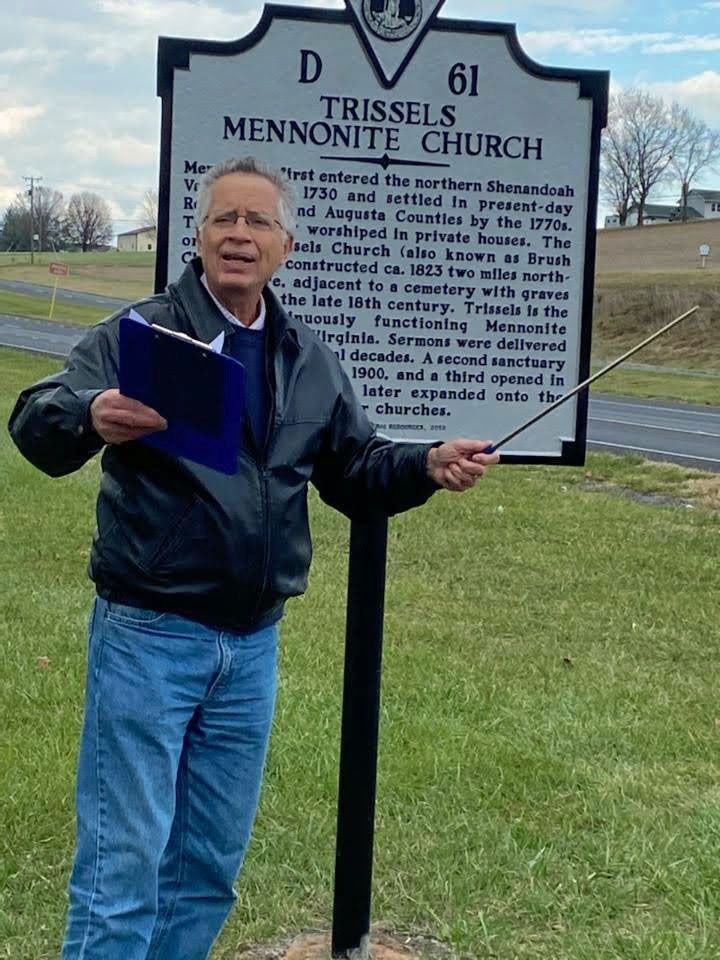What does a letter buried in an Indiana archive have to do
with questions about staying in Mennonite Church USA today? Quite a bit, I’d
argue. The letter, which I found in our denominational archives eight years
ago, reveals that some of the earliest Virginia Mennonite leaders believed in
the value of a church-wide association of congregations. Upon finding the
letter, I had a little party of one by the copying machine in the lobby. Since
then, I’ve discovered more stories confirming that in each era, Virginia
leaders have spoken for, written about, and defended the value of staying with
the denomination. Please consider these brief vignettes that I think provide
significant direction for today.
1853: That thin
and yellowed letter in the Indiana archive came from the pen of Virginia
Mennonite Bishop Martin Burkholder. Thirty-six, he wrote a letter to a
Pennsylvania Bishop friend, and asked that he and other ministers in Lancaster
Conference consider helping him create a general conference of Mennonites. Burkholder
and Bishop Samuel Shank Sr. made several circuit trips to Pennsylvania, Ohio,
New York, and Canada, asking for a general conference to be formed, but to no
avail. After Bishop Martin Burkholder passed away a few months before the Civil
War began, it would be decades until his vision for a Mennonite association of
area conferences came into being. The great irony of my search in libraries and
archives along the east coast, and then finding the letter in Indiana, 157
years after it was written in the Shenandoah Valley, is that having a national archive
is one outstanding rationale for staying with a denomination long term.
1897: A year
before the Mennonite Church got organized in 1898, Virginia Bishop Lewis J.
Heatwole traveled to Elida, Ohio, for preliminary meetings. He and other
ministers like Christian Good and Samuel M. Burkholder went to see what was
happening, and to report back to leaders in Virginia. L. J. Heatwole faithfully
traveled to the early meetings of the Mennonite Church, and kept Virginia
Conference informed about wider church developments. With L. J. Heatwole’s
clear leadership toward participating, Virginia Conference joined the Mennonite
General Conference in 1911.
1919: When
Virginia Mennonite Conference met a year after World War I ended, it adopted
eighteen fundamentals of faith. Conservative in nature, the articles were
adopted, almost word for word, two years later by the Mennonite Church.
Virginia Conference’s action, adopted at my home congregation in Broadway,
Virginia, October 18, 1919, held significant influence and sway on the
Mennonite Church for nearly two generations.
1942: When
critical ministers urged Virginia Conference to leave the Mennonite Church
during WWII, Bishop John L. Stauffer reacted strongly. Though some thought the
broader church had become too liberal, Stauffer stated that Virginia needed to
stay and not leave. Bishop Stauffer, then President of Eastern Mennonite
College, had significant church wide experience, and he urged the Conference to
stay in the denomination. Stauffer’s voice, along with others, won the day.
1981: Ruth
Brunk Stoltzfus waited patiently to speak at the Mennonite Church Convention in
Bowling Green, Ohio. The hot topic was whether women could be involved in
ministry. Her speech at an open microphone stirred many, and helped to create
action in the direction of accepting women in leadership. Virginia Bishop
Glendon Blosser ably and gladly served as Moderator at the 1981 Bowling Green
Conference, the seventh of eleven Virginia Mennonite leaders to serve as moderator
of the denomination.
1997: My wife
and I took our family to Orlando, Florida, for the Mennonite Church General
Assembly in the summer of 1997. While our three young children enjoyed the fun
times for kids and we soaked up the Florida warmth, I served as a delegate from
Virginia Conference. We took our kids to Disneyland after the Mennonite Church
made proactive plans to integrate with the General Conference. Owen Burkholder,
from Harrisonburg, served in 1997 as both denominational moderator and as
Virginia Conference minister, the lead executive staff position.
2019: Today’s issues are different than in the past, but in other ways quite similar. I teach history and Bible to descendants of Bishop Martin Burkholder, whose letter I found in Indiana. I try to help them understand the high value their ancestor held in organizing a general conference. Further, I will take a bit of Bishop Burkholder’s spirited vision with me when I serve as a delegate at the 2019 Mennonite Church USA Convention in Kansas City. My reading of Virginia Mennonite Conference history is that at each turn in the road of divisive issues, key leaders in Virginia Conference have spoken in favor of participation in the wider denomination. Such is the direction I would urge today.


